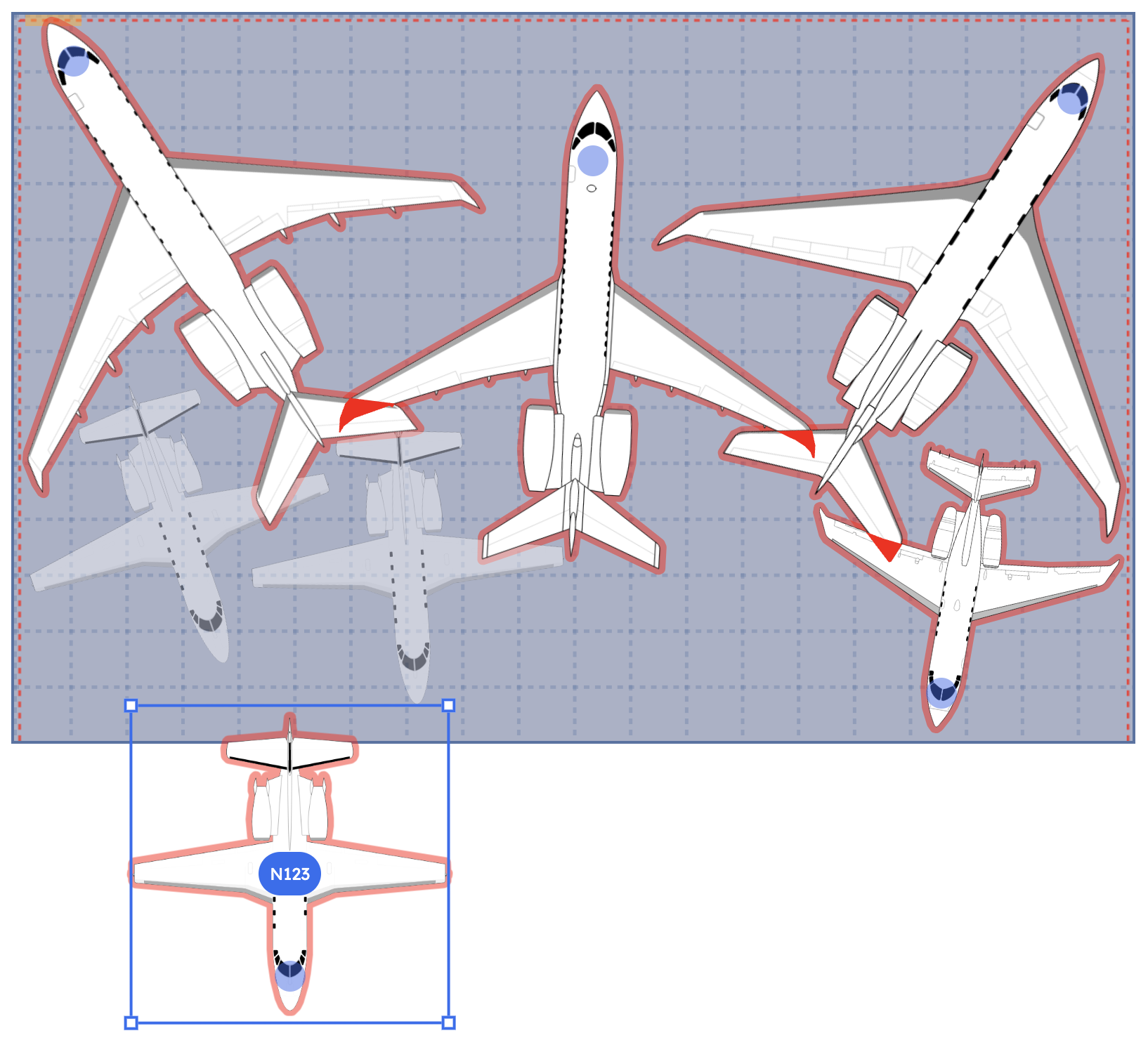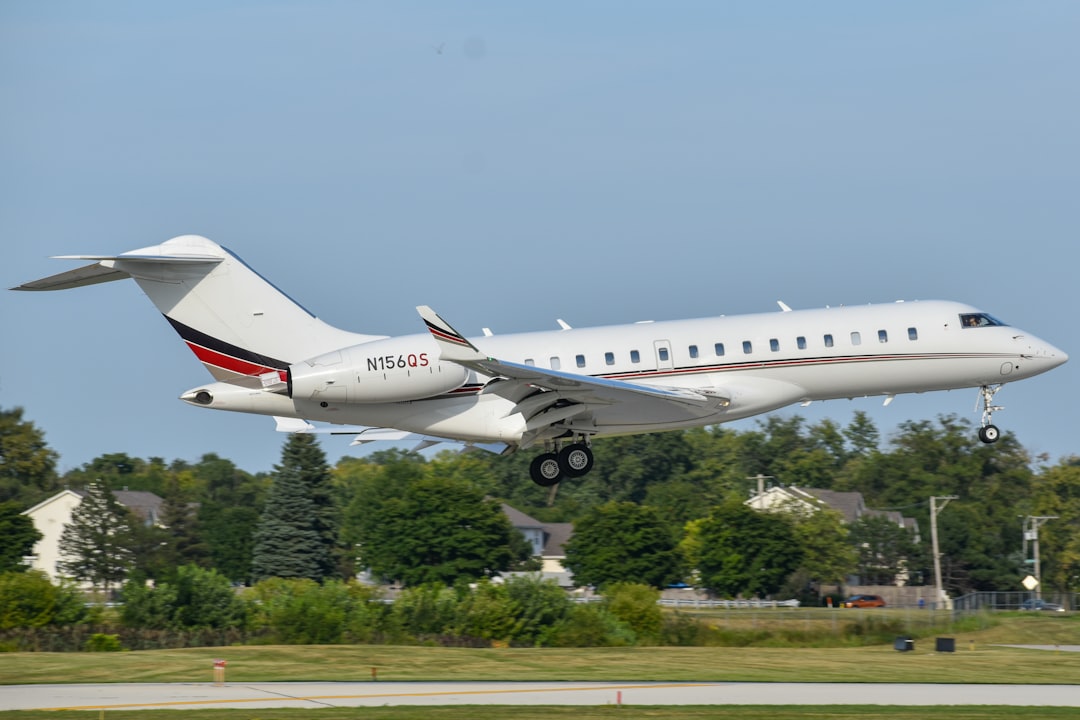The Weirdest Hangar Shapes and Layout Nightmares FBOs Deal With
Published on September 15, 2025 • 6 min read
.jpg/250px-Last_Look_at_Hangar_One_(cropped).jpg)
Parking a $2 million aircraft in a building that started as a cattle shed presents unique challenges. Aircraft hangar configurations often feature support columns in inconvenient locations and triangular corners that create problematic dead zones.
FBO managers dealing with oddly-shaped hangars face common challenges. From converted farm buildings to WWII-era structures with frequent support pillars, the aviation industry utilizes many storage spaces originally designed for other purposes.
When Cattle Sheds Become Aircraft Homes
At Poplar Grove Airport in Illinois, Dick Thomas literally transformed his family farm into an airport in 1972. His first "hangars"? The existing cattle sheds. While charming in a historical sense, imagine explaining to a Gulfstream owner that their jet will be sleeping where Bessie used to moo.
This isn't just ancient history. Across the country, FBOs are still dealing with converted warehouses, repurposed industrial buildings, and structures that were clearly designed for anything but aircraft. These conversions often feature:
- Low clearance heights that make you hold your breath when a King Air taxis in
- Support columns placed with zero consideration for wingspan
- Doors that open just wide enough to create a false sense of security
- Concrete floors sloped for drainage—great for cattle, terrifying for aircraft
 When your hangar started life as something else entirely
When your hangar started life as something else entirely
The Column Conundrum: When Support Gets in the Way
Modern hangars boast "clear span" construction—engineering speak for "no columns to crash into." But visit any airport built before 1990, and you'll find hangars dotted with support columns like a concrete obstacle course.
One pilot on an aviation forum described their multi-span hangar experience: "Everything in my hangar has wheels. Not because I like mobility, but because I need to play Tetris every time someone wants their plane out." Another mentioned needing wing walkers at all four corners just to navigate between columns—turning a simple repositioning into a six-person operation.
The real kicker? Insurance companies know these layouts are trouble. Industry data shows hangar rash incidents account for 40% of all ground damage claims, with average repair costs ranging from $25,000 for minor wing damage to $200,000+ for structural repairs involving control surfaces. Factor in aircraft downtime—typically 2-6 weeks depending on parts availability—and you're looking at lost revenue that can exceed the repair costs themselves.
Architectural Marvels That Make You Scratch Your Head
Then there are the truly bizarre configurations. Take the Tustin Blimp Hangars in California—17 stories high and built almost entirely of wood because steel was scarce during WWII. Each could hold six blimps, which sounds impressive until you try to fit modern business jets into a space designed for giant balloons.
Or consider Quonset huts—those semi-circular corrugated steel structures that dot older airports. Sure, they're 100% clear span, but their curved walls create unusable space along the edges. One FBO manager described it perfectly: "It's like trying to park in a giant tin can. The center's great, but good luck using those last 10 feet on either side."
 Quonset huts: Great for avoiding columns, terrible for maximizing square footage
Quonset huts: Great for avoiding columns, terrible for maximizing square footage
The Tight Squeeze Championships
But perhaps nothing beats the shared hangar squeeze. Picture this: a 40x40 hangar with three aircraft, where "wingtips touch underwing" isn't a figure of speech—it's Tuesday.
Real pilot testimonials from aviation forums paint a sweaty picture:
- "I have less than two inches of clearance on each side, which requires finesse... definitely more difficult than crosswind landing"
- "Less than a foot clearance on each side of my DA40 used to make me sweat"
- "Successfully navigated for two years without damaging strobe lights against the door frame"
The consensus? It's a recipe for hangar rash, with diagonal parking and aircraft dollies becoming survival tools rather than conveniences.
Technology Solutions That Actually Work
While you can't relocate that concrete column, technology can dramatically reduce incidents:
Proximity Warning Systems:
- Laser-based perimeter sensors trigger audible alerts at 6-foot intervals
- LED light strips along hangar walls change from green to amber to red as aircraft approach
- Wireless sensors on tugs provide 360-degree proximity monitoring
- Cost: $15,000-$25,000 per bay vs. potential $50,000+ incident costs
Advanced Towing Equipment:
- Electric tugs with precision steering (±1-inch accuracy)
- Remote-controlled aircraft dollies for tight spaces
- Hydraulic wing jacks for vertical clearance in low hangars
- Towbar-less tugs that eliminate jackknifing risks
Planning Software: Modern hangar management systems like AirPlx's 3D AutoStack don't just visualize—they calculate (learn about 3D aircraft stacking):
- Optimal towing sequences to minimize aircraft moves
- Safe clearance paths around obstacles
- Weight distribution for floor load limits
- Maintenance access requirements for scheduled work
 Modern software helping FBOs make the most of challenging hangar layouts
Real-World Success Stories: When Weird Hangars Work
Case Study 1: Regional FBO Column Challenge A 100-year-old hangar in the Northeast with 8 support columns saw a 60% reduction in incidents after implementing:
- Wireless proximity sensors on each column ($12,000 investment)
- Standardized aircraft positioning protocols
- Monthly safety refresher training
- Result: Zero incidents in 18 months, $45,000 in avoided claims
Case Study 2: Converted Warehouse Transformation A former automotive warehouse turned aircraft hangar increased capacity by 40% through:
- Strategic removal of one non-load-bearing wall ($15,000)
- Installation of ceiling-mounted aircraft lifts ($75,000)
- LED runway-style guidance lighting ($8,000)
- Result: Additional $180,000 annual revenue from increased aircraft count
Case Study 3: Multi-Tenant Quonset Hut Optimization A 1940s-era Quonset hut maximized unusable curved space by:
- Installing moveable partition walls ($25,000)
- Creating tiered aircraft storage system ($50,000)
- Implementing reservation system for premium center positions
- Result: 35% increase in revenue per square foot
The FBO Manager's Survival Guide: Operational Excellence in Challenging Hangars
Phase 1: Assessment and Documentation (Week 1-2)
-
Comprehensive Space Audit:
- Measure every column, beam, and clearance to the inch
- Document floor load ratings and drainage patterns
- Identify "no-go zones" where aircraft simply won't fit
- Create a digital twin using 3D scanning if budget allows
-
Historical Analysis:
- Review 12 months of incident reports
- Identify problem areas and peak congestion times
- Calculate current utilization rates by zone
Phase 2: Equipment Investment (Month 2) 3. Strategic Equipment Purchases:
- Invest in towbar-less tugs for tight spaces ($25,000-$45,000)
- Add hydraulic wing jacks for vertical clearance ($5,000-$8,000)
- Install LED guidance systems along critical paths ($10,000-$15,000)
- Purchase aircraft dollies rated for your heaviest aircraft
Phase 3: Process Development (Month 3) 4. Standard Operating Procedures:
- Create aircraft-specific positioning protocols
- Establish mandatory two-person verification for tight moves
- Develop emergency evacuation procedures for each bay
- Institute daily safety briefings for ground crews
Phase 4: Training and Certification (Ongoing) 5. Competency-Based Training:
- Quarterly tug operation certification
- Monthly hangar safety assessments
- Annual emergency response drills
- Peer mentoring for new ground crew
Phase 5: Revenue Optimization 6. Maximize Utilization:
- Implement dynamic pricing for premium spots
- Offer discounts for flexible positioning
- Create "overflow" agreements with nearby FBOs
- Use dead zones for ground equipment storage rental
The Business Case for Improvement:
A typical oddly-shaped hangar improvement program costs $50,000-$100,000 but delivers:
- 15-25% reduction in incident rates (saving $30,000-$50,000 annually)
- 10-15% improvement in aircraft utilization (additional $75,000-$125,000 revenue)
- 20% reduction in aircraft positioning time (improved customer satisfaction)
- Lower insurance premiums (5-10% reduction on $100,000+ policies)
ROI Timeline: Most FBOs see payback within 12-18 months, with ongoing benefits that compound annually.
Your 30-Day Action Plan: From Nightmare to Optimized
Week 1: Quick Wins ($0-$5,000)
- Audit current hangar layout and document all obstacles
- Implement buddy system for all aircraft moves
- Install temporary floor markings for safe positioning zones
- Create emergency contact procedures for each bay
- Review insurance policies for coverage gaps
Week 2: Safety Investments ($5,000-$15,000)
- Purchase proximity sensors for highest-risk areas
- Install LED strip lighting along critical pathways
- Upgrade to towbar-less tugs if budget allows
- Create incident reporting system with mobile app access
Week 3: Process Optimization ($2,000-$8,000)
- Develop aircraft-specific positioning protocols
- Implement reservation system for premium spots
- Create standardized pre-move safety checklists
- Establish regular safety meeting schedule
Week 4: Revenue Enhancement ($10,000-$25,000)
- Implement dynamic pricing for different hangar zones
- Offer premium positioning services
- Create partnerships with nearby FBOs for overflow
- Develop maintenance-friendly positioning packages
90-Day Follow-up Metrics:
- Incident rate reduction target: 50%
- Customer satisfaction improvement: 25%
- Revenue per square foot increase: 15%
- Insurance premium reduction: 10%
Remember, even the weirdest hangar beats leaving aircraft on the ramp. And who knows? That converted cattle shed might just give your FBO some character—and with the right improvements, profitability too.
Optimize Your Odd-Shaped Hangar with AirPlx
Dealing with columns, weird angles, or converted buildings? AirPlx's 3D visualization and optimization tools help you maximize every square foot—no matter how strange the shape.


